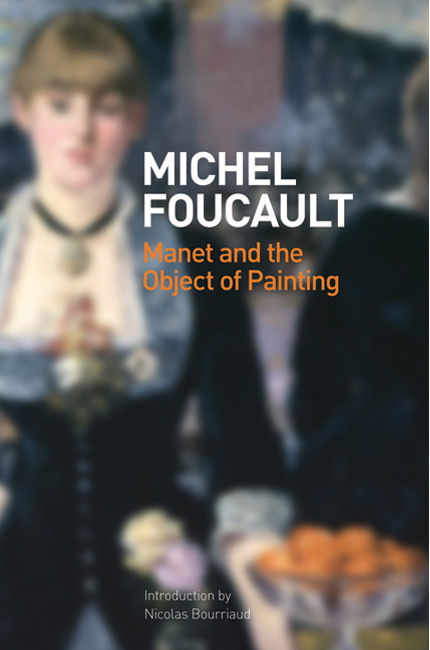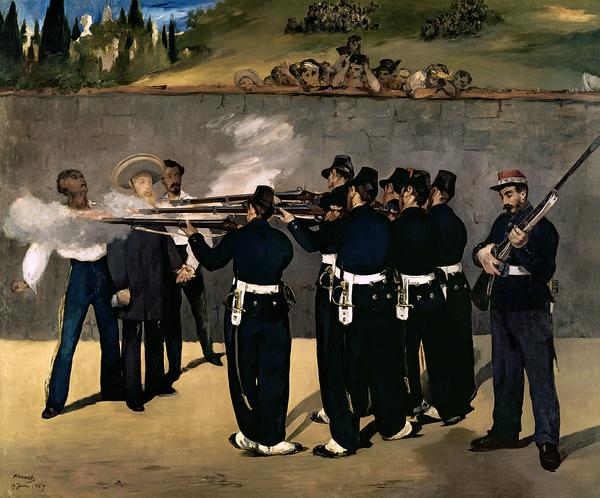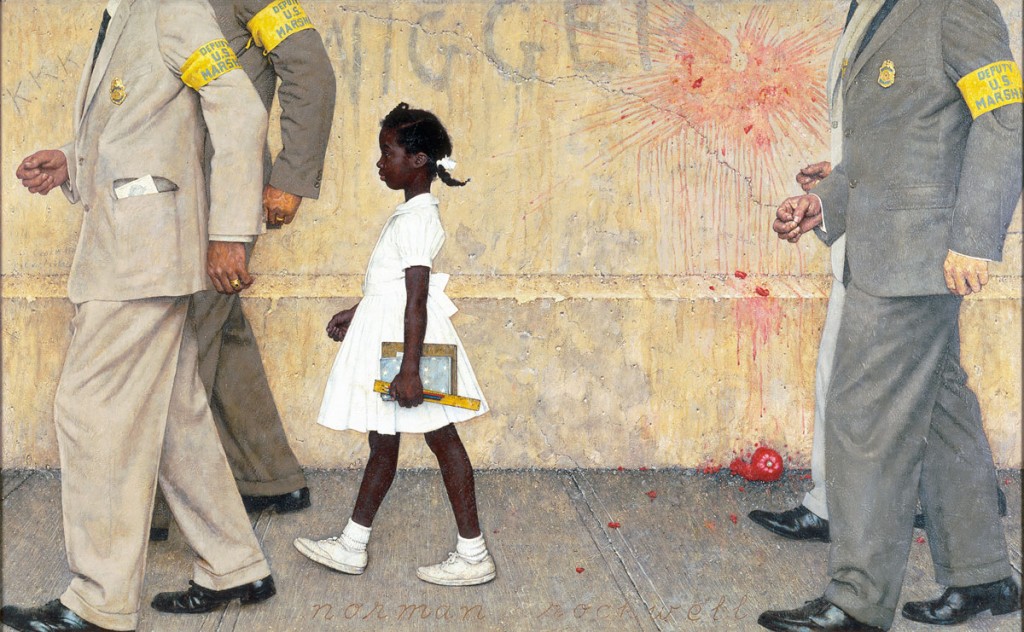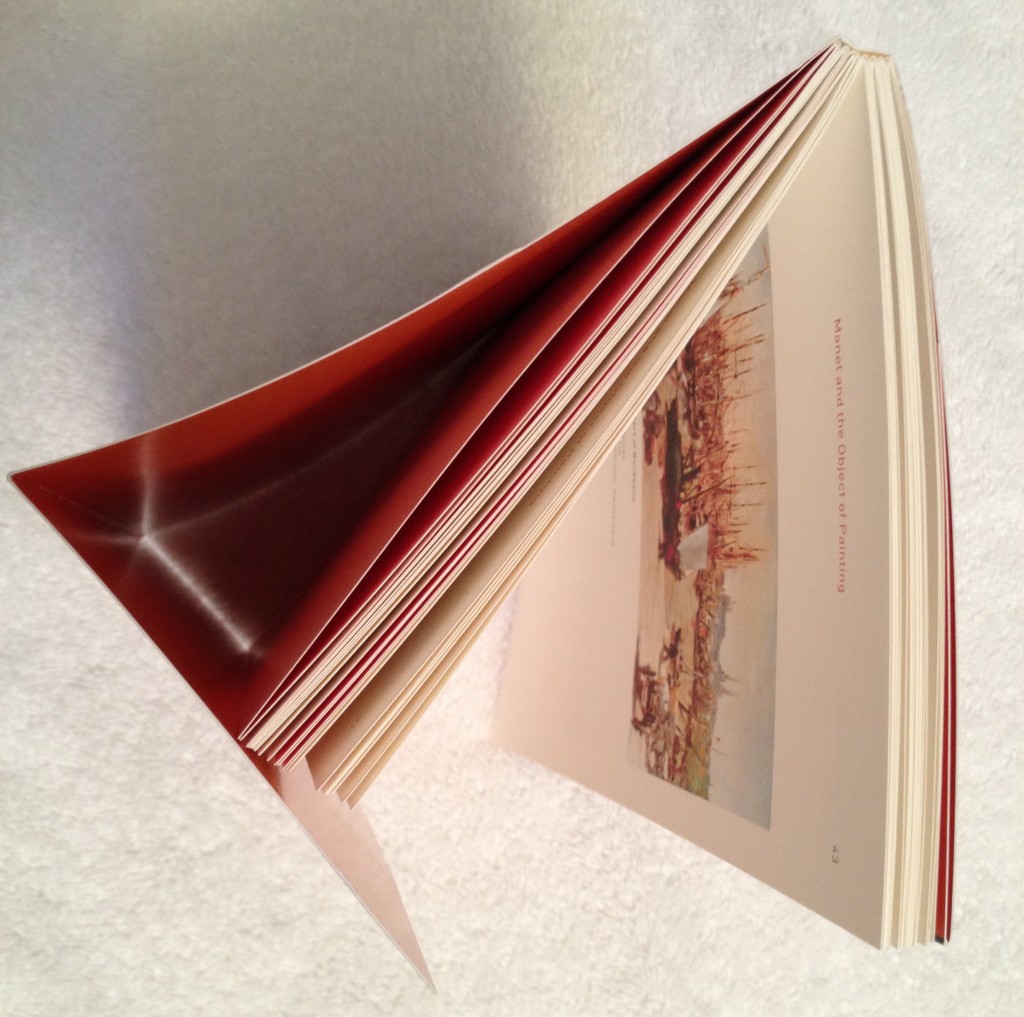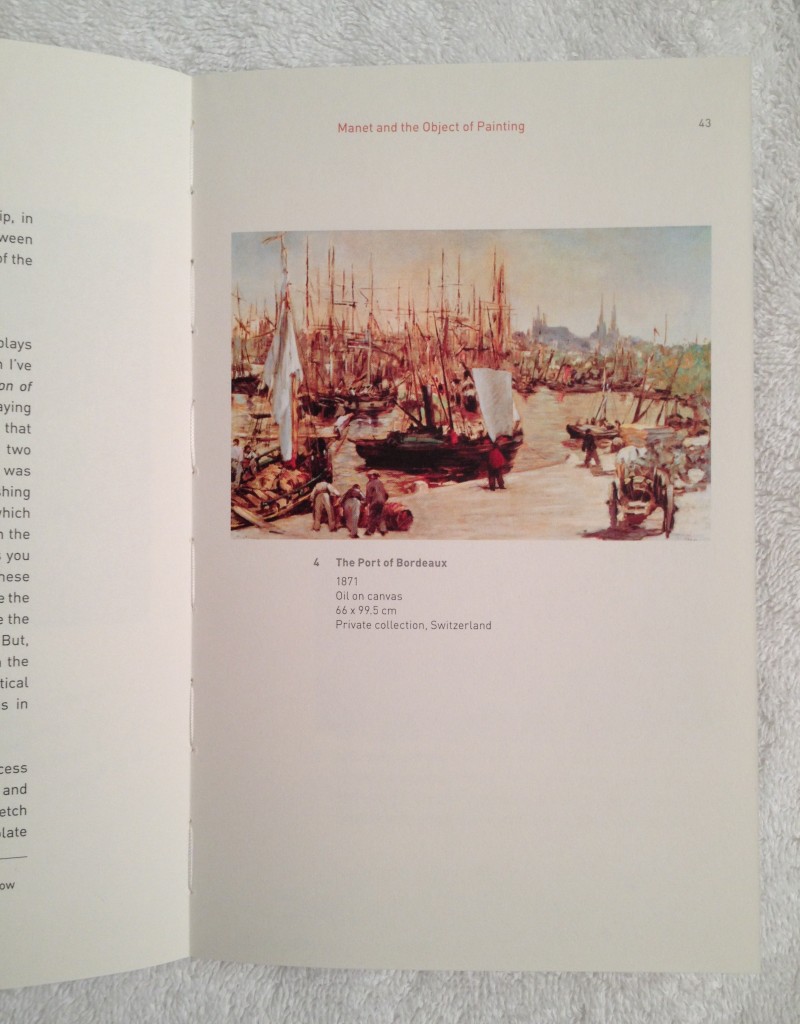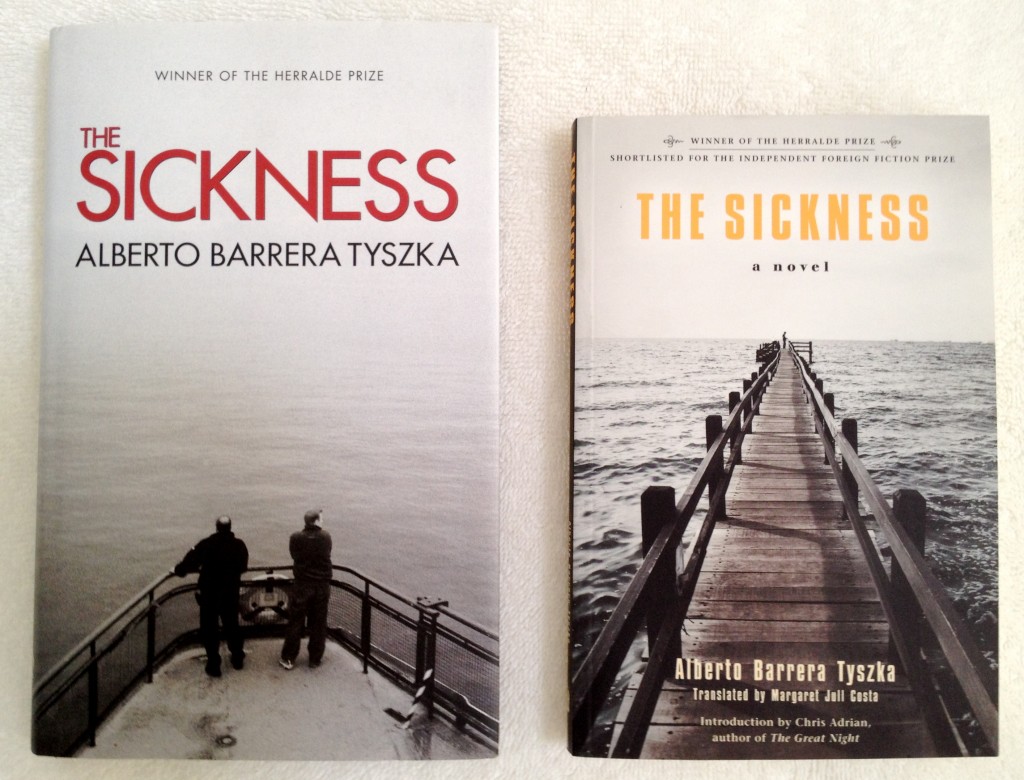.
.
The text of this thin volume is a translation from French to English of a transcript of a recording of a lecture Michel Foucault delivered in 1971 at the Tahar Haddad Cultural Club in Tunis. Foucault’s words, in print, occupy 40 pages.
While multiple factors (time, place, language, the reduction of voice to print) conspire to keep Foucault’s lecture from fully engaging the American reader of today, what Foucault still manages to communicate are insights that, I believe, will interest the typical museum-goer.
Foucault illustrated his lecture with 13 slides. The book includes reproductions of each of those paintings, from “Music in the Tuileries” (1862) to “A Bar at the Folies-Bergere” (1881-82). Unfortunately, the illustrations are so tiny (for example, the 81.9 inches by 104.5 inches of “Luncheon on the Grass” (1862-63) are shrunk to a Lilliputian 3.2 by 4.2 inches) and so blandly reproduced (details are lost, colors misplaced, and the punch of Manet’s blacks absent) as to make them nearly worthless. Until a future e-publisher energizes Foucault’s text with interactive content, consider bringing to your reading spot both this book and a tablet on which to access the illustrations in fuller detail, such as the set of 13 gathered on one page on this site.
Additional editorial content includes an excellent introductory essay by Nicolas Bourriaud (11 pages), a very brief Translator’s Introduction by Matthew Barr, and a one-page index.
At the beginning of his lecture Foucault notes: “I am not a Manet specialist; nor am I a painting specialist, so it is as a layman that I would speak to you about Manet.” His focus is on formal analysis, and he organizes his thoughts under three rubrics: (1) the space of the canvas; (2) lighting; and (3) the place of the viewer. It is with these strategies, Foucault argues, that Manet succeeded at “inventing, if you like, the ‘picture-object’, the ‘painting-object’” — a move that made possible all of modern art.
Reading “Manet and the Object of Painting” provided me a new set of deciphering tools to use when standing before a Manet. More broadly, Foucault taught me new ways to look at representational art of all kinds.
Consider, for example, the first of his themes — Manet’s adoption of a radical approach to space that eschews traditional depth into the picture plane. Pointing to his first slide, the painting “Music in the Tuileries” (1862), Foucault notes how “there is not much depth, the figures in front are in a way masking almost completely what happens behind, from which derives this effect of a frieze.” In his second illustration, “The Masked Ball at the Opera” (1873-1874), he again points to how “the whole spatial balance is modified … Not only is the effect of depth erased, but the distance between the [front] edge of the picture and the back is relatively short, such that all the figures find themselves projected forward; far from there being depth, you have on the contrary a sort of phenomenon of relief.”
Similarly, in “The Execution of Maximilien” (1868), Manet employs “the same procedures, that is to say a violently marked and compressed closing of space by the presence of a large wall, a large wall which is no more than the repetition of the canvas itself; whereby, as you can see, all the figures are placed on a narrow band of earth.”
.
.
Armed with Foucault’s observations, I looked anew at the work of Norman Rockwell. This may seem an odd choice for a compare-and-contrast exercise. Yet I would argue that in many of his immediately memorable compositions Rockwell effectively reforms space in ways reminiscent of Manet. Recall Foucault’s descriptions in the preceding paragraphs: not much depth … the presence of a wall … a violently marked and compressed closing of space … the effect of a frieze. See how fittingly those strategies attach to “The Problem We All Live With” (1964):
.
.
Citing Normal Rockwell serves a secondary purpose, which is to suggest the constraints on Foucault’s perspective. First, his interest is limited to painting. Other forms of representation such as sculpture, drawing, printmaking and illustration, are ignored. More importantly, the revolt whose success Foucault convincingly attributes to Manet ended what we now are able to appreciate was merely a brief interregnum, a mode that triumphed but a few hundred years (from, say, the early 15th to the late 19th centuries) before receding into the broad flow of European artistic output. Also, non-European art — the bulk of mankind’s imaginative achievements — is not within Foucault’s ken.
You may be disappointed too if you expect Foucault to stray much beyond formal analysis into the realm of philosophy. Fortunately, that task is taken up by Nicolas Bourriaud whose superb essay I recommend be read both before, and after, reading the main text — especially if, like me, you’ve had no previous exposure to Foucault’s works of philosophy.
“Manet and the Object of Painting” is a handsomely produced book; I was pleased by Tate Publishing’s surprising use, in a paperback binding, of stitch-sewn signatures (click on the photos to enlarge them).
.
.
.
NOTES
1. Available online are the initial minutes of Foucault’s Lecture on Manet, in Tunis (I estimate the entire lecture occupied an hour). The audio recording can be accessed from the right side of this French language page: http://michel-foucault-archives.org/?Manet. The site introduces the audio excerpt with this explanation: “En marge du Cahier de l’Herne Foucault qui reproduit deux versions des conférences de Foucault sur Manet, nous mettons en ligne quelques minutes de la conférence que Foucault donna le 20 mai 1971 au Club Haddad, conférence intitulée « La Peinture de Manet ». Foucault avait en effet le projet d’un ouvrage sur Manet, entrepris à partir de 1966, et qui était promis aux éditions de Minuit. Ces recherches donnèrent lieu à plusieurs conférences : à Milan en 1967 où il fit la rencontre d’Umberto Eco, à la Albright-Knox Art Gallery de Buffalo le 8 avril 1970 sur “Le Bar des Folies Bergères” ainsi qu’à Florence en novembre 1970, à Tokyo durant l’automne de la même année, et enfin à Tunis en 1971.”
2. Here’s a mystery calling for a solution: The present volume (on page 27, footnote 1) indicates this lecture was part of a regular Tuesday evening series at the Haddad Center. Yet all the scholarship I’ve found cite Foucault’s Manet lecture date as May 20, 1971, which was a Thursday.
